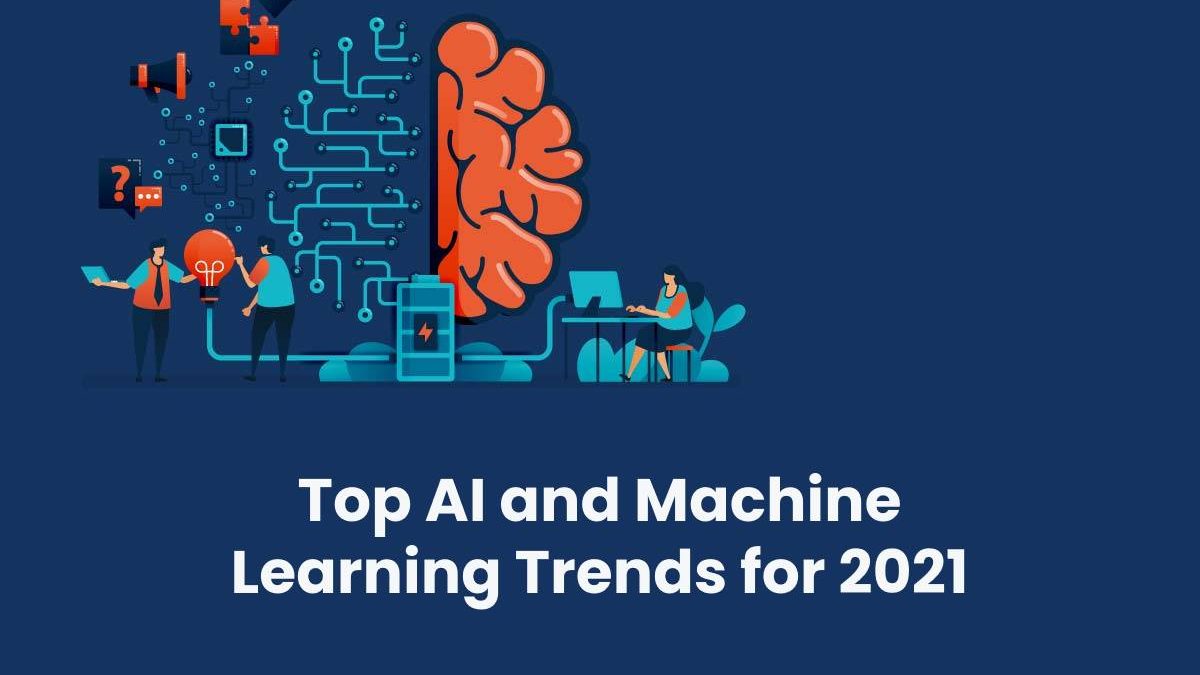Top AI and Machine Learning Trends for 2024
Remember Winston from The Origin? The powerful AI developed by the famous scientist Edmond Kirsch led Robert Langdon throughout his quest to understand who murdered him, only to find out that Winston was the murderer, through a painting of itself that it had drawn? Well, the story may have been entirely fictional when Dan Brown published it in 2017, but it seems that Artificial Intelligence and Machine Learning are soon catching up with it.
About a week ago, Fetch.ai auctioned off three paintings developed by AI and ML algorithms using random inputs from users on a platform called CoLearn pAInt.
Many other innovations and concepts have been trending in the field of ML and AI; let’s take a look at some of them:
Table of Contents
1. Machine learning in Hyper Automation
Hyper Automation in machine learning works on a simple assumption: everything in an organization can be automated using ML. Deep data-driven insights and decision-making for organizations can be accessed and assisted through ML. AutoML platforms will make it convenient for users to access ML algorithms without investing in a data science team. This will reduce operational costs and allow more room for productive work.
2. Machine Learning meets IoT
As we already know, the Internet of Things is a network of appliances and devices connected to the Internet to enable interaction between them. IoT has been the flagbearer of many technological breakthroughs in the past decade. These gadgets are designed to collect data that can be analyzed and processed to provide relevant information. This is where machine learning comes into action. Data collected by IoT devices may be transformed into valuable, actionable outputs using machine learning algorithms.
Green Horizons, for example, is a project initiated by IBM’s Research Lab in China to reduce pollution levels. This is accomplished by using an IoT network in which sensors collect data on automotive emissions, traffic levels, weather, airflow direction, and pollen levels, among other things. Then, using machine learning algorithms, the most effective approach to reduce these emissions is determined.
3. Reinforcement Learning
Reinforcement Learning is a training method in machine learning that rewards the machine for desirable actions and punishes it for undesirable ones. Thus, it is an application of deep learning that uses personal experiences to improve the effectiveness of acquired data. This carrot-and-stick approach towards training machines can result in software that can accurately achieve the ultimate goal, for instance, chatbots redirecting customers to the correct representatives, etc. RL has already proved its mettle in the robotics and gaming industries; OpenAI’s robot solved Rubik’s Cube in a matter of seconds, and DeepMind’s AlphaGo learned to play Go and defeated the world champion Lee Sedol in 2016.
4. Applications in CyberSecurity
As networks and services over the internet diversify, data grows more powerful, and thus privacy becomes an increasingly prominent concern. Machine learning has a variety of uses in cybersecurity, including detecting cyber threats, combating cybercrime, and improving available antivirus software, among others.
Furthermore, AI-enabled cybersecurity tools can be used to collect data from a company’s software systems and external sources and then employ algorithms to identify patterns to minimize malicious behavior. As a result, AI will aid in the detection of existing risks and variants of earlier threats. AI will help cybersecurity teams focus on more important concerns by reducing downtime, increasing efficiency, and allowing them to focus on other crucial challenges.
5. Augmented Intelligence
Essentially AI with a twist, Augmented Intelligence allows machines and humans to work collaboratively and use insights from data to drive decisions. For those wondering if AI-powered machines are likely to sabotage their jobs, Augmented Intelligence comes as a refreshing trend.
Often, the insights from data remain limited to Data Scientists and top decision-makers of an organization. Augmented Intelligence allows these insights to be shared with every worker in the organization, so everyone knows what is happening and how their actions have/will contribute to the company’s progress. This allows frontline employees to get a 360-degree view of the consumer mentality, thus allowing more productivity.
A stellar example of this is Coca-Cola, which seems hell-bent on squeezing every possible drop of insight from its expansive database. When images of its items, or those of competitors, are uploaded to the internet, the corporation employs AI-driven image recognition technology to detect them and uses algorithms to determine the best way to display them. According to the firm, ads targeted in this way have a four times higher probability of being clicked on than those targeted in other ways.
Conclusion
AI and ML are driving businesses and industries, and upskilling towards data science is the next logical step for every job-seeker. While it may look daunting, learning data science isn’t that difficult. Whether you are a beginner or a professional, it always helps to learn by trying different Machine Learning Projects and applying your concepts.
Happy Learning!
Author Bio:
Harshita Bansal is a Technical Content Writer at Crio.Do, driven by her inexplicable love for coding and writing, and the need to grow her career with industry-level experience. While the world grapples with specializing in a particular niche, her sole aim in life is to know a little bit of everything and be what is called “The Jack of All Trades”.

